What is Hot Air Rework Station
Hot air rework stations are sophisticated tools used in the electronics industry for repairing and reworking printed circuit boards (PCBs) and other electronic components. These stations are indispensable for anyone involved in the maintenance, repair, or production of electronic devices. They are particularly essential for technicians who need to remove and replace faulty parts on PCBs with precision and accuracy, without causing damage to the surrounding components.
The principle of operation for hot air rework stations is based on the scientific process of reflow soldering. When a component needs to be removed from a PCB, the station directs a stream of hot air to the connection points of the component. The heat from the air melts the solder, allowing the component to be lifted off the board without excessive force. This process is not only used for individual repairs but also plays a vital role in the production of electronic devices by enabling the assembly and disassembly of complex circuits.
Hot air rework stations come with various nozzles and tools designed to work on different types of components, from small capacitors to large integrated circuits. These tools can be swapped out depending on the size and type of component being worked on. The station's controls allow technicians to adjust the temperature, air flow, and duration of heating to suit the specific requirements of the repair job at hand.
Types of Hot Air Rework Stations
The variety of hot air rework stations available is tailored to meet the diverse needs of different applications. Here are some common types:
-
Handheld Hot Air Rework Stations: These compact devices are ideal for small-scale projects or occasional use. They are easy to maneuver and suitable for delicate work such as repairing surface-mounted components on circuit boards.
-
SMD Rework Stations: SMD (Surface Mount Device) rework stations are specialized for working with SMD components. They feature a combination of nozzles, heating elements, and sensors that provide precise control over the heating process, minimizing the risk of damage to the components.
-
BGA Rework Stations: BGA (Ball Grid Array) rework stations are designed for removing and replacing BGA components. They typically have a heating and cooling zone to ensure proper reflow of solder balls when replacing or installing new parts.
-
Desoldering Stations: Desoldering stations focus on removing solder from joints to disassemble or replace components. They often have a vacuum pump or bulb that creates suction to pull molten solder from the joints.
-
Preheating Systems: Preheating systems warm up the PCB before hot air treatment to reduce thermal shock and prevent damage to the board's components. They are particularly useful for high-reliability applications where consistency is key.
Each type of hot air rework station has its own set of common use cases depending on the level of precision required, the size of the components being worked with, and the frequency of use.
How to choose Hot Air Rework Station
Selecting the right hot air rework station is crucial for businesses looking to ensure quality repairs and efficient workflow. Several considerations should guide your decision-making process:
-
Temperature Control: Look for a station with precise digital temperature control, as it is essential for handling delicate electronic components without causing damage.
-
Air Flow: Consider a station with adjustable air flow, which provides versatility for different component sizes and soldering requirements.
-
Portability: If your work involves moving between locations, opt for a lightweight and compact unit that's easy to transport.
-
Ease of Use: A user-friendly interface with clear temperature readouts and controls will enhance your efficiency and reduce the learning curve for new technicians.
-
Additional Features: Features such as auto-sleep mode (to save energy), automatic shutdown (to prevent overheating), and adjustable temperature (for versatile soldering tasks) can offer significant advantages.
About Hot Air Rework Station on Alibaba.com
Alibaba.com stands out as a global marketplace connecting businesses with a vast selection of hot air rework stations suitable for various industries—from electronics manufacturing to machinery repair shops. With an extensive network of suppliers offering products with diverse specifications and features, customers can find a rework station that meets their specific operational requirements without being limited by geographical constraints.
The platform's commitment to facilitating international trade is evident in its user-friendly interface that supports multiple languages and mobile accessibility. This ensures that even when on-the-go, businesses can easily navigate through options and communicate with suppliers effectively. Moreover, Alibaba.com's Trade Assurance service provides an added layer of security by protecting payments until delivery is confirmed.
Given its comprehensive product listings across nearly 5,900 categories from over 200,000 suppliers, Alibaba.com is well-positioned to serve as a one-stop solution for businesses seeking quality hot air rework stations. Whether you're looking for standard models or customized solutions, Alibaba.com offers an array of options that cater to both your technical requirements and budgetary considerations.
Common FAQs for Hot Air Rework Station
What is a hot air rework station used for in industrial settings?
A hot air rework station is used in industrial settings for tasks that require precise and controlled application of heat, such as electronics manufacturing, automative repairs, or any process involving soldering and reflowing of components.
How does a hot air rework station work?
A hot air rework station works by using a heating element to raise the temperature of the air around a component until the soldering or desoldering process can take place, allowing for the part to be removed or reworked as needed.
Can hot air rework stations work on any surface type?
Hot air rework stations are primarily designed for electronics, which includes circuit boards and components. They can be used on a variety of materials and surfaces, but it's essential to check the equipment's specifications to ensure compatibility.
What should I consider when choosing a hot air rework station for my business?
When choosing a hot air rework station, consider the types of components you need to work on, the space available in your facility, the precision and control required for your applications, as well as the technical support and after-sales service provided by the supplier.
Are there different tips available for hot air rework stations, and how do I select the right one?
Yes, hot air rework stations come with various tips for different types of applications. The selection of the right tip depends on the specific work you'll be doing and the precision and type of components you'll be working with.
What is the purpose of a vacuum pump in a hot air rework station?
A vacuum pump in a hot air rework station creates negative pressure within the heating chamber, which helps remove noxious fumes and prevents damage to sensitive components during desoldering or reworking processes.
How do I know if I need a dual-way rework station?
A dual-way rework station is designed to allow access to components from both the top and bottom sides of a PCB, which can be necessary for working with double-sided boards or densely populated designs.
What safety features should I look for in a hot air rework station?
Safety features to look for include automatic shut-off mechanisms in case of overheating, grounded plugs, and ESD-safe designs. These features help prevent potential hazards associated with working with high temperatures and electrical equipment.
Can I use a single hot air rework station for multiple applications?
While some hot air rework stations are designed as multipurpose and can handle various applications, it is generally recommended to have dedicated stations for specific tasks to ensure optimal performance and to prevent cross-contamination.




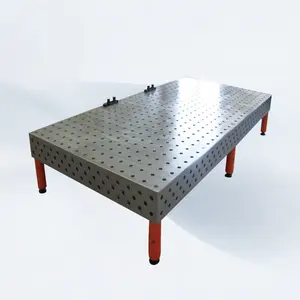

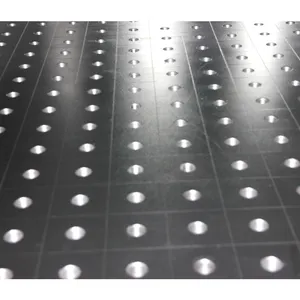

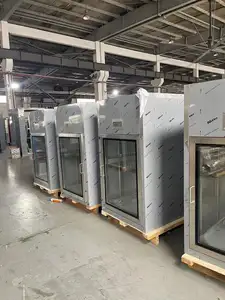

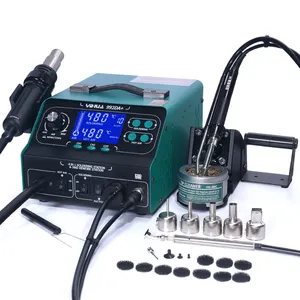


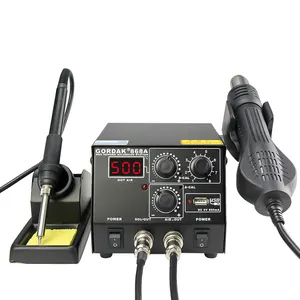



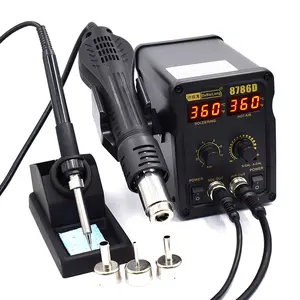

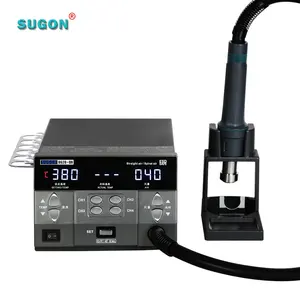

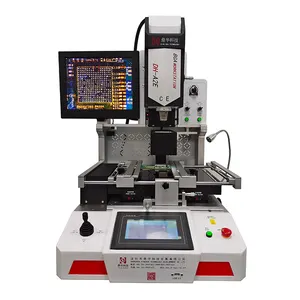
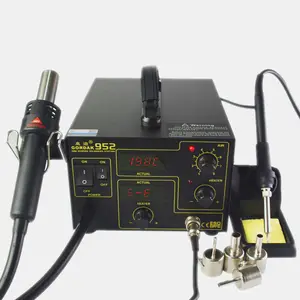

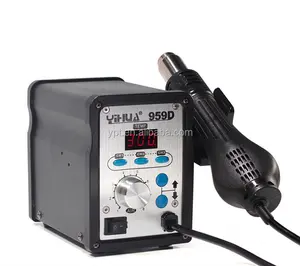

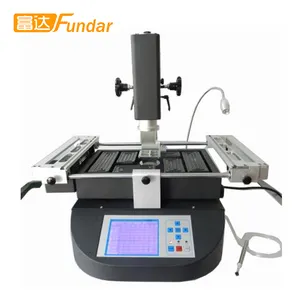
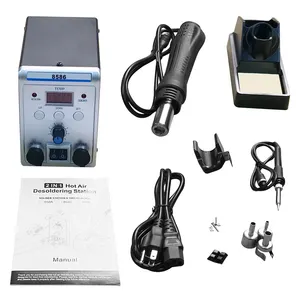


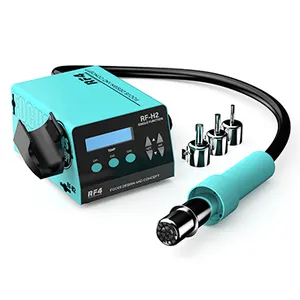



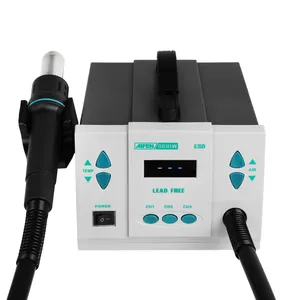







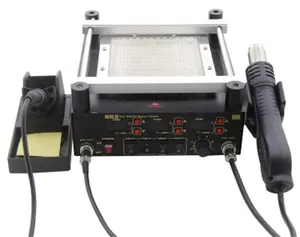


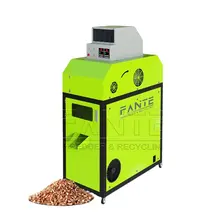

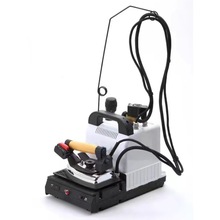

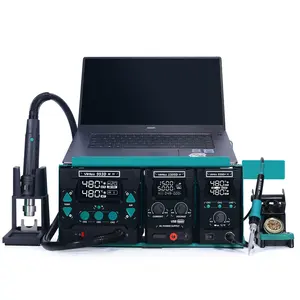


























 浙公网安备 33010002000092号
浙公网安备 33010002000092号 浙B2-20120091-4
浙B2-20120091-4